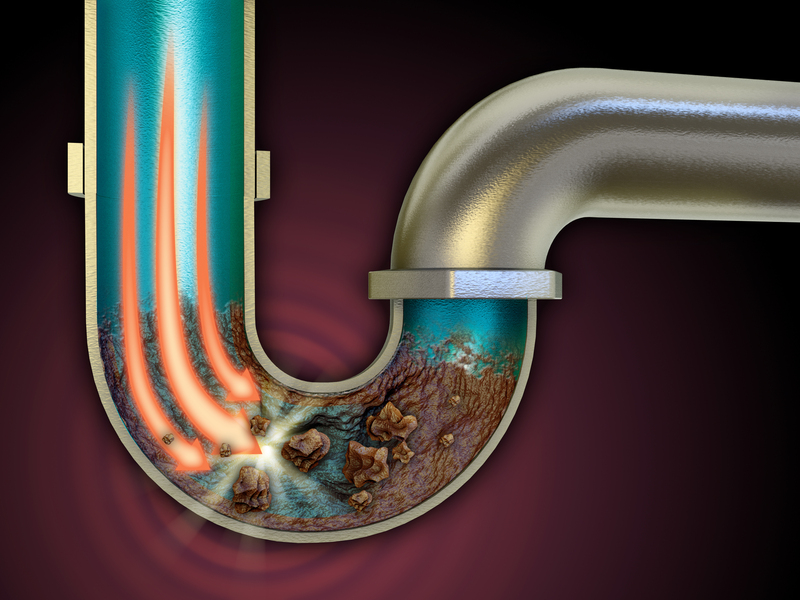Demystifying the Action of Enzymes on Stubborn Stains
Posted on 04/01/2025
Stubborn stains can be a real nuisance, and traditional stain-removing methods often fall short in delivering satisfactory results. However, the use of enzymes has been gaining popularity in recent years as an effective solution for removing stubborn stains. But what exactly are enzymes and how do they work on tough stains? Let's dive into the science behind it and understand the benefits and drawbacks of using enzymes for stain removal.
What are Enzymes?
Enzymes are biological molecules that act as catalysts in chemical reactions, speeding up the process without being consumed themselves. These tiny proteins are naturally produced by all living organisms including plants, animals, and microorganisms like bacteria and fungi. In simpler terms, enzymes break down complex molecules into smaller particles, making it easier for other substances to interact with them.

How Enzymes Remove Stains?
Stains can be broadly categorized into two types: water-soluble and oil-based. Water-soluble stains can be easily removed with traditional detergents as they dissolve in water. However, oil-based stains like grease, blood, or sweat require a different approach. This is where enzymes come into play.
Most enzymes used for stain removal are proteases, which target protein-based stains like grass, blood, or sweat. Amylases target starchy or carbohydrate-based stains like sauces or chocolate. Lipases break down fatty or oily stains like butter or cooking oil. When these enzymes come in contact with the stain, they attach to the molecules and break them down into smaller particles that can be easily rinsed away.
Importance of Temperature and pH
For enzymes to effectively break down a stain, certain conditions need to be met. The most important factors include temperature and pH levels. Enzymes have an optimal temperature range at which they work best. For example, proteases work best at temperatures between 40?C to 60?C (104?F to 140?F), while amylases and lipases have an optimal temperature range of 25?C to 45?C (77?F to 113?F). This is why it is important to follow the temperature instructions on enzyme-based detergents.
Similarly, pH levels also play a crucial role in the enzyme's action. Most enzymes work best at neutral pH (around 7), but some are specifically designed for either acidic or alkaline environments. For example, amylases work best in slightly acidic conditions, while lipases prefer alkaline environments. It is essential to use detergents with the right pH level for the type of stain you are trying to remove.
Pros of Using Enzymes for Stain Removal
1. Effective on stubborn stains: Enzyme-based detergents are highly effective in removing tough stains that traditional methods struggle with. The enzymes target specific types of stains and break them down into smaller particles, making them easier to remove.
2. Environmentally friendly: Enzymes are natural substances that are biodegradable and do not contribute to pollution. This makes them a more eco-friendly option compared to harsh chemical cleaners.
3. Safe for fabrics: Unlike bleach or other harsh chemicals, enzymes do not damage fabrics or cause discoloration. They are gentle on clothes and can be used on a wide range of fabrics without any fear of damaging them.
4. Easy to use: Enzyme-based detergents are readily available and easy to use. Simply add them to your laundry cycle as you would with regular detergent.
Tips for Using Enzymes
1. Pre-treat stains: For best results, pre-treat stubborn stains with an enzyme-based solution before washing the fabric. This will give the enzymes more time to work on the stain, increasing their effectiveness.
2. Test on a small area first: Before using enzyme-based products on a new fabric or garment, always test it on a small, inconspicuous area to ensure that it does not cause any damage.
3. Follow temperature and pH instructions: To maximize the action of enzymes, make sure to follow the recommended temperature and pH levels for the detergent you are using.

Takeaways
Enzymes are highly effective in removing stubborn stains, but it is essential to understand their optimal working conditions and follow instructions carefully for best results. They are a more environmentally friendly and safe option for stain removal compared to traditional chemical cleaners. With proper use, enzymes can help keep your clothes looking clean and fresh without causing damage or discoloration.
Conclusion
In conclusion, enzymes may seem like a mystery when it comes to stain removal, but the science behind their action is quite simple. These natural proteins break down tough stains into smaller particles, making them easier to remove. With the right temperature and pH levels, they can be highly effective in removing even the most stubborn stains without damaging fabrics. So next time you encounter a tough stain, reach for an enzyme-based detergent and let science do its magic.








